#glutenfreecooking
Text
Why Quinoa Flour is Your New Gluten-Free Go-To
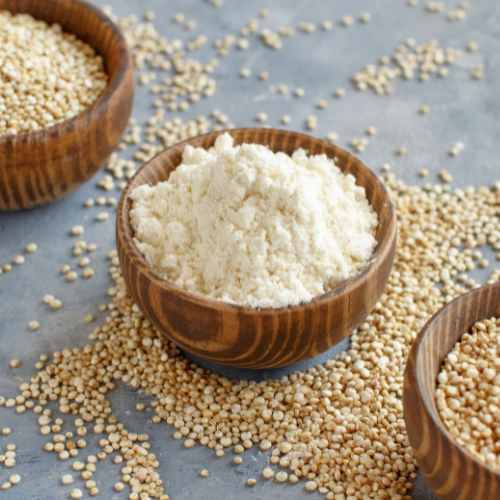
Quinoa flour is a bit of a newcomer but is already proving to be a popular choice amongst those in the know. For those navigating the world of gluten-free cooking, getting to grips with gluten-free flour can sometimes be a daunting task. Packed with all the goodness of quinoa, this flour is a game-changer for those on a gluten-free diet. In this post, we will explore everything you need to know about this fantastic flour alternative. And, for good measure, throw in some tips about how to use it in your favourite recipes.
Introducing Quinoa Flour
Quinoa may be absolutely everywhere but it turns out that it also happens to make a surprisingly good gluten-free flour. Quinoa flour, made from quinoa grain, is rising in popularity due to its excellent nutritional profile and gluten-free credentials. Made by grinding whole quinoa grains into a fine powder, it has a subtle, nutty flavour and can be used as a direct substitute for wheat flour in many recipes. Its versatility makes it an essential ingredient in gluten-free baking, allowing for the creation of delicious, nutrient-dense food items that cater to the needs of gluten-sensitive and health-conscious individuals alike.
Organic quinoa flour
Organic quinoa flour, as the name suggests, is derived from organically grown quinoa grains. This means they are cultivated without the use of synthetic pesticides, or fertilizers, and are non-GMO, ensuring you get the purest form of this nutritious superfood. By choosing organic quinoa flour, you are not only making a healthier choice for your body but also supporting sustainable farming practices that benefit our environment.
Check out our organic quinoa flour
The Nutritional Value of Quinoa Flour
You don't need us to tell you that quinoa is really really good for you, but just in case here's a recap.
Rich in Protein
Quinoa flour stands out in the world of gluten-free alternatives primarily due to its high protein content. Quinoa is in fact made up of 22% protein. Unlike many other actual grains, quinoa is a complete protein, which simply means it contains all nine of the essential amino acids. Pretty exceptional for a plant-based protein! Each serving provides a substantial amount of protein, making it an excellent choice for vegetarians, vegans, or anyone looking to add more plant-based protein to their diet. Unlike traditional grain flours, this high protein content also contributes to the feeling of fullness, making meals more satisfying and aiding in weight management.
This powerful little pseudo-grain is a particularly potent source of the amino acid lysine, which aids in tissue repair.
Vitamins and Minerals
Quinoa flour is not only protein-rich but packed with a variety of essential vitamins and minerals. It contains significant amounts of B vitamins, a wide spectrum of E vitamins, plus a host of minerals including iron, magnesium, potassium, and calcium. A rich source of silica, it can help keep skin strong and elastic. It also has powerful antioxidant properties provided by the E vitamins and flavonoids that appear in high concentrations.
Omega-3 and Fatty acids
Also rich in essential fatty acids, and particularly anti-inflammatory omega-3s, quinoa flour is a rich source of oleic acid which is thought to help lower LDL cholesterol.
Fibre Content
A fantastic source of dietary fibre. Fibre not only keeps everything moving along nicely but also helps to control blood sugar levels by slowing the absorption of sugar into the bloodstream. Plus, high-fibre foods like quinoa flour can help to manage weight by promoting a feeling of fullness and reducing overall calorie intake. So, not only does it provide a gluten-free, protein-packed alternative to traditional flours, but can also contribute to digestive health, blood sugar control, and weight management with its high fibre content.
Gluten-Free
And of course, one of the best things about quinoa is that it is gluten-free.
Is Quinoa Low-Carb?
Quinoa is often thought to be a great choice for those following a low-carb diet. Yet it is important to understand that while quinoa is lower in carbs than some types of grains, it is not strictly a low-carb food. A cup of cooked quinoa contains around 40 grams of carbs, which is more than the daily intake suggested by some low-carb diets. That being said, it's a complex carbohydrate, which means it digests slower than simple carbs and offers sustained energy without causing a rapid spike in blood sugar. Therefore, while not a low-carb food in the strictest sense, it can still be a healthier choice compared to many other grains and is enjoyed by many people following a balanced, healthy diet.
Cooking and Baking with Quinoa Flour
So, while it is good to know just how nutritional this stuff is, what we really want to know is how to cook with it. Right? We will be looking at these things in more detail over time, but here's a quick overview to get you started.
The basics of cooking and baking with quinoa flour
In the realm of gluten-free flour, quinoa flour is high in protein and has a high absorption rate. If you remember from our in-depth guide to using gluten-free flours, these flours can be grouped into two categories. These are protein flours and starches. High protein flours often have more pronounced flavours than starches but they do lend strength and elasticity to a bake. Starches, on the other hand, contribute little in the way of flavour yet they add a fluffy light texture to the heavier protein flours.
Just as some quinoa can be slightly bitter, but not all, the same goes for its flour. Again, the flavour can range from profoundly earthy to pleasingly nutty.
As with most gluten-free flours, this flour is best used alongside other varieties to get the best balance between texture and flavour for your particular recipe needs. That said, your choice of flour will depend very much on what you are making, so there are times when you can directly substitute for all-purpose wheat flour.
Substituting quinoa flour in recipes
Getting to grips with using gluten-free flour is always a bit of a baptism by fire. Recipes and suggestions should be used as a guideline only, largely because such flours can be wholly unpredictable. There is nothing more frustrating than a tried and tested recipe that does not deliver results.
There will be some cases where it is safer to begin with a 1:1 substitution for wheat flour than others. Remember that the protein content makes it denser, and also means it will absorb more water. Gluten is required to build strength, elasticity, and structure into a bake so it is really important in bread making yet can lead to toughness in a pastry. Cakes need little in the way of gluten, yet also require a certain amount of bulk and fluffiness.
And then there is flavour. Quinoa flour has a pronounced flavour. If you find that it tends towards bitterness, then it can be toasted in a moderate oven for about 10 to 15 minutes before cooling and using. So, whilst you may not want to make a delicate Victoria sponge with quinoa flour, it could be perfect for that parmesan pastry you have in mind. Or a more robustly flavoured banana muffin.
So our advice is to begin with a 1:1 ratio in recipes where it may seem appropriate. Like a pastry or a muffin. If you find it too dry, then use a little less flour, or a touch more liquid.
Sauces and batters rely more on the liquid content of the recipe. So substitute your flour slowly, gradually adding more until you reach the desired consistency.
Tips for cooking and baking with quinoa flour
Test small batches first: Before using quinoa flour in large quantities, consider trying it in smaller recipes. This allows you to understand its unique characteristics and adjust your main recipe accordingly.
Blend with other flours: Quinoa flour alone may not suit all recipes. Try blending it with other gluten-free flours to create a balance of flavour and texture.
Adjust liquid levels: Quinoa flour tends to absorb more liquid than wheat flour. Keep an eye on your batter or dough and be prepared to add extra liquid if it seems too dry.
Store properly: Keep your quinoa flour in an airtight container in a cool, dark place. Proper storage preserves the flour's taste and extends its shelf life.
Cooked quinoa flour: If the flavour of quinoa flour is too strong, try toasting it in the oven for 10-15 minutes before cooling and using. This can help to reduce bitterness.
Use in savoury recipes: Quinoa flour can be a wonderful addition to savoury recipes like flatbreads, pizza dough, or pasta, where its unique flavour can shine.
Healthy baking: Use quinoa flour in recipes where health is a priority. It is protein-rich and offers a nutritious alternative to traditional flour.
Quinoa flour in bread-making
It's a whole other subject, but the protein content of quinoa flour makes it an excellent contender in the gluten-free bread stakes. It will need to be used alongside other flours though so we will explore this more fully at a later date.
To sum up, it would certainly seem that even for those without gluten-related disorders, quinoa flour offers a change of pace from traditional flours, allowing for experimentation with diverse, nutrient-rich alternatives in the kitchen.
Have you seen our other gluten-free flours?
This article was reproduced on this site with permission from operafoods.com.au the “Gluten Free Flour Suppliers”.
See original article:- Why Quinoa Flour is Your New Gluten-Free Go-To
Read the full article
2 notes
·
View notes
Text
0 notes
Text
GlutenFree Recipe
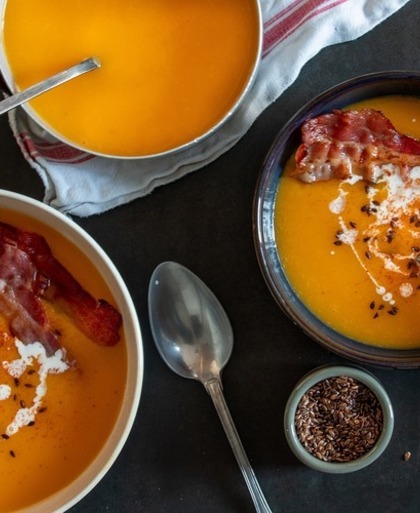
Gluten Free Butternut Squash Soup with Bacon - This gluten-free butternut squash soup is the ideal winter comfort food. Sweet squash, warm spices, and salty bacon combine to make a delicious and filling soup.
0 notes
Text
🍝🇮🇹 Join Us for a Pasta Pici Making Cooking Class! 🍝🎉

Get ready to roll up your sleeves and dive into the art of pasta-making with Culinary Gene's Chef Pasqualina Raspaolo! 🍝✨ Join us on Tuesday, Feb 13 at 7:00 PM at the Italian Cultural Foundation at Casa Belvedere for an evening of culinary delights and hands-on learning.
During this special event, participants will learn how to make both gluten-free and regular Pasta Pici, a beloved Tuscan specialty. From mixing the dough to hand-rolling each strand, you'll experience the true essence of Tuscan cuisine right in the heart of Staten Island.
But that's not all! You'll also have the opportunity to discover the secrets behind Aglione Sauce, another Tuscan classic that's sure to tantalize your taste buds. 🍅🌿
Don't miss out on this unique opportunity to learn, taste, and experience the flavors of Italy like never before. Click the link HERE to register for the event today!
And remember to share this post with your friends—it's sure to be a pasta party you won't want to miss! 🎉🍽️
We want to hear from you! Share your thoughts and feedback about traditional Italian food and culture in the comments below. Let's keep the conversation going! 🗣️🇮🇹
#PastaPici#ItalianCooking#GlutenFreeRecipes#PastaMaking#TuscanCuisine#ItalianFoodie#HandmadePasta#CookingClass#FoodieEvents#ItalianCulture#TasteOfItaly#HomemadeRecipes#FoodAndFun#ItalianTradition#GlutenFreeCooking#RecipeSharing#CulinaryExperience#ItalianHeritage#PastaParty#FoodForTheSoul#ItalianFlavors#CookingWorkshop#DiscoverItaly#TuscanSpecialties#ShareTheLove#FoodieFriends#FeedbackWelcome#StatenIslandEvents
0 notes
Text
Super Delicious & Gluten-Free Meal Guide, Recipe Post #551: Stuffed Bell Peppers
Try this as your next healthier meal option to serve up for you and your family:
Front-Row Seats for the Best Gluten-Free Stuffed Bell Peppers Recipe
Are you in search of an easy-to-follow, delicious, and healthy gluten-free lunch or dinner recipe? Load up on vitamins and minerals with our stuffed bell peppers that feature high-quality proteins and a riot of colorful veggies. Absolutely…
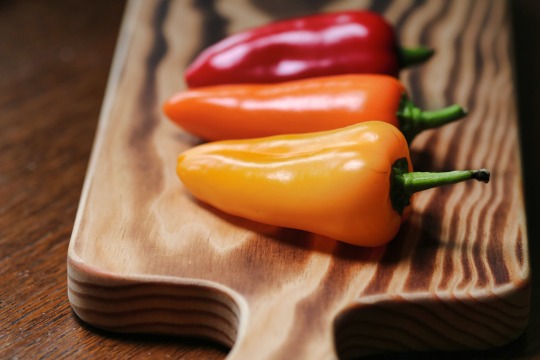
View On WordPress
#dinnerideas#easyglutenfreerecipes#gluten-free meals#glutenfreecooking#glutenfreerecipe#glutenfreestuffedbellpeppers#healthier meal options#healthyrecipes#lunchideas#mealideas
0 notes
Photo

Light and gluten-free slow cooker General Tso's chicken
Looking for a healthy and mouthwatering dinner idea? Look no further. Dive into the goodness of Slow Cooker General Tso's Chicken - made light and gluten-free, it's a guilt-free treat for your taste buds.
0 notes
Photo
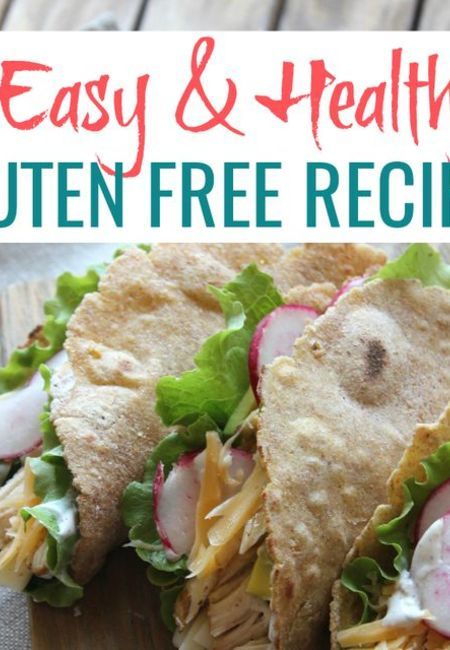
You Should Try These Gluten-Free Meals
Expand your gluten-free recipe repertoire with these scrumptious and beginner-friendly meal ideas. Say goodbye to culinary restrictions and hello to easy, mouthwatering dishes.
0 notes
Text
Getting the Best From Gluten-Free Pasta

Gluten free pasta can be a bit of a hit and miss affair. But with a bit of know how and a really good basic sauce you will wonder why you never made the switch sooner.
Next to bread, pasta must be the most missed menu item when going gluten-free. Possible the quickest and easiest meal to put together on the planet, as well as satisfying and cheap to make, pasta has earned its place in our recipe repertoire. But what happens when you decide to give up gluten; what on earth will fill that gaping pasta shaped hole?
What is gluten free pasta made from?
Again, it is the very qualities of wheat and its resident gluten that make pasta the success that it is. A lot of commercial gluten-free pasta is made from corn, and whilst it does hold its shape and texture well, the proliferation of corn in gluten free products is leading it into the same difficult territory as modern wheat.
But there are alternatives, and the eating quality of gluten-free pasta has come a long way. As we saw in our article on gluten free flours, quinoa and rice have significant amounts of protein that make them robust enough to make pasta, and sorghum is also ideal.
There are now completely grain free pasta options available too.
The trick with gluten free pasta is careful cooking. The timing on the manufacturer label may not be entirely accurate so you may want to be flexible with this. Nobody wants overcooked gluey pasta, but gluten free pasta is far less forgiving than the wheat variety.
Cook your gluten free pasta in a large pan with plenty of room, and lots of salt in the water. Keep it over a high heat on a rolling boil. Once the pasta begins to soften, keep checking it every few minutes. As it approaches the almost done stage, keep checking more frequently. You want to drain it before you think it is ready, when it is still a little firm. Then, drain it quickly, toss it in hot sauce, and serve immediately.
Try these organic quinoa rice pasta shells
Or this organic quinoa rice penne
This organic spaghetti is made from sorghum
Try this organic sorghum fusilli
Go grain free with this edamame and mung bean fettucine
Great pasta needs great sauce
A great sauce can change the way you look at pasta forever. Once you go down the road of gluten free, chances are that you will start scrutinising the food that you eat more and more. Food and ingredients that once were perfectly acceptable are suddenly unveiled as the chemical concoctions that they really are. The answer? Make it yourself.
The basic tomato sauce could not be simpler. Made from just a handful of ingredients, it is a prime example of letting simplicity shine. Make a big batch and freeze it in portions to use as a base for your pasta sauces, or just as a sauce in its own right. It is also an excellent starting point for maximising flavour in stews and braises, and any other tomato based dishes.
The best basic tomato sauce recipe
A good tomato sauce should be all about the tomatoes. Onions add sweetness and acidity, whilst the sundried tomatoes are there for texture. The oil makes it glossy and rich. Interestingly if your sauce is bitter at the end of cooking, as tomato sauce often is, try adding more salt not the usually suggested pinch of sugar. Add the salt a pinch at a time until you can taste the sauce has rounded out. You will end up with a far better balanced and complex savoury sauce than if you added a pinch of sugar.
1 x onion, chopped
2 x cloves garlic, whole
2 x bay leaves
1/4 cup olive oil
1 tsp flaked sea salt
2 tbsp organic tomato paste
150g organic sundried tomatoes, chopped
2 x 680g organic tomato and basil passata
- Place a large saucepan over a medium low heat and add half of the olive oil.
- Add the onions with the salt, garlic and bay leaves. Cook gently, stirring occasionally until softened yet not browned.
- Add the tomato puree and stir for a few minutes.
- Add the sundried tomatoes and the passata, along with the rest of the oil. Fill the passata bottle with water and add this too.
- Bring to a simmer and then lower the heat (probably as low as it is will go) so the sauce very gently bubbles.
- Simmer the sauce this way for at least an hour.
- When the sauce it ready, the liquid will have reduced by about a third and you can see the change in the texture. Instead of simmering, the bubbles start to form craters that pop and start making a mess of your hob.
- Batch up into portions and freeze.
Matching your pasta to your sauce
Long thin pasta types need nothing more than a slick of sauce so the above tomato sauce works great just as it. Chunky pasta types like penne work well with a chunky sauce so here you can get creative and use your basic tomato sauce as a base. Try heating it in a shallow saucepan, and adding a can of tuna, a handful of mussels and a few olives. Finish with an extra slick of oil and a handful of chopped fresh parsley. Or why not fry off some chopped peppers and mushrooms before adding a portion of your basic sauce? These are just two ways that you can build on the basic sauce, and get great pasta every time!
Want to learn more? Start with this introduction to gluten-free food.
Explore our range of gluten-free groceries, available to order online. Why not buy in bulk to take advantage of wholesale prices?
This article was reproduced on this site with permission from operafoods.com.au the “Gluten Free Grocery wholesalers”.
See original article:-
Read the full article
0 notes
Text
What Makes Sprig Tamari Soy Sauce Gluten-Free? Discover the Secret to Gluten-Free Flavor!
Sprig Tamari Soy Sauce has gained popularity in recent years as a delicious and versatile condiment. With its rich umami flavor and versatile applications, it has become a staple in many kitchens around the world. What sets Sprig Tamari Soy Sauce apart is its unique quality of being gluten-free, making it a go-to choice for individuals with gluten sensitivities or celiac disease. In this article, we will delve into the reasons behind Sprig Tamari Soy Sauce's gluten-free status and explore the secret to its delectable gluten-free flavor.
Understanding Gluten: Gluten is a protein found in wheat, barley, rye, and related grains. For individuals with gluten sensitivities or celiac disease, consuming gluten can lead to a range of adverse health effects. It is crucial for them to identify gluten-free alternatives that still offer exceptional taste and culinary possibilities. Sprig Tamari Soy Sauce fits this bill perfectly, providing a gluten-free option without compromising on flavor.
The Tamari Difference: Tamari soy sauce is derived from fermented soybeans, much like traditional soy sauce. However, what sets Tamari apart is its unique manufacturing process. Traditional soy sauce often includes a mixture of soybeans and grains like wheat, which can introduce gluten into the final product. In contrast, Tamari soy sauce is made using only soybeans, making it inherently gluten-free.
Sprig Tamari Soy Sauce's Production: Sprig Tamari Soy Sauce follows a meticulous process to ensure its gluten-free status. The soybeans used in its production undergo fermentation, which naturally breaks down proteins and carbohydrates. This fermentation process removes any gluten present in the soybeans, resulting in a pure and gluten-free soy sauce.
Rigorous Quality Control Measures: To guarantee the gluten-free nature of Sprig Tamari Soy Sauce, rigorous quality control measures are implemented at every stage of production. The company takes great care to prevent cross-contamination with gluten-containing ingredients throughout the manufacturing process. This attention to detail ensures that individuals with gluten sensitivities can confidently enjoy the sauce without any worries.
The Secret to Gluten-Free Flavor: One might wonder if removing gluten affects the flavor profile of Sprig Tamari Soy Sauce. Fortunately, the answer is no! Despite being gluten-free, Sprig Tamari Soy Sauce retains its distinct umami taste and robust flavor. This is attributed to the natural fermentation process, which enhances the sauce's depth and complexity.
Versatility in the Kitchen: Sprig Tamari Soy Sauce's gluten-free nature does not limit its versatility in the kitchen. It can be used as a dipping sauce, marinade, or ingredient in a wide range of dishes, including stir-fries, sushi, soups, and salad dressings. Whether you're following a gluten-free diet or simply looking to explore new flavors, Sprig Tamari Soy Sauce offers endless culinary possibilities.
Conclusion: Sprig Tamari Soy Sauce stands out as a gluten-free alternative to traditional soy sauce, providing a delicious and safe option for those with gluten sensitivities or celiac disease. Through its meticulous production process and adherence to strict quality control measures, Sprig ensures that its Tamari soy sauce is free from gluten while preserving its remarkable taste. So, go ahead and savor the umami-rich goodness of Sprig Tamari Soy Sauce, knowing that it not only satisfies your taste buds but also caters to your gluten-free lifestyle.
#SprigTamari#GlutenFreeSoySauce#TastyTamari#SprigFlavors#SoySauceLovers#HealthyEating#GlutenFreeDelights#FlavorfulDishes#SoySauceInspiration#DeliciouslyGlutenFree#SprigRecipes#TamariTreats#GlutenFreeCooking#SoySauceAddict#GourmetSoySauce#lucky store#buy now#imported#luckystore.in
0 notes
Text

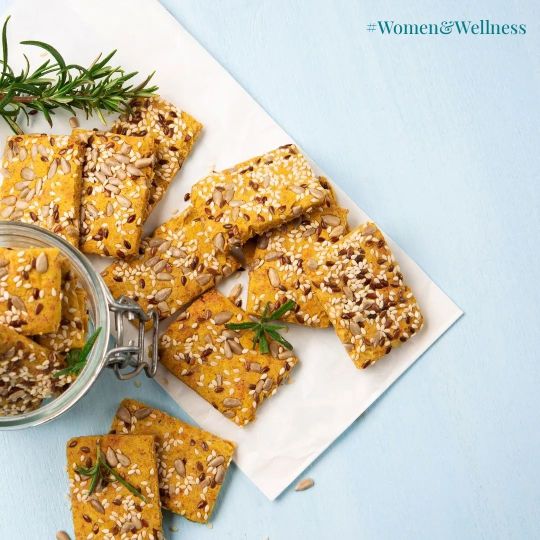
Crunch without gluten guilt! 🙏
Discover a world of delicious gluten-free snacks that you won't be able to resist
#dishasfuntionalfoods#GlutenFree#nutritioncoach#GlutenFreeDiet#CeliacAwareness#GlutenIntolerance#GlutenSensitive#GlutenFreeLiving#WheatFree#GrainFree#GlutenFreeFoodie#GlutenFreeLife#GlutenFreeCooking#GlutenFreeRecipes
0 notes
Text
🍝✨ Journey into the Heart of Italian Tradition with 'Pasqualina’s Table: The Gluten-Free Way' ✨🇮🇹

Welcome to a culinary expedition through time with 'Pasqualina’s Table'—a testament to the rich tapestry of Southern Italian family history. 🍲🍷 Immerse yourself in the stories, traditions, and delectable gluten-free alternatives that bring authentic family recipes to life.
🌿 Preserving Cherished Traditions - From appetizers to desserts, each tantalizing recipe is a product of relentless family research spanning the United States and Italy. Memories, emotions, and instinct converge in this unique cookbook, lovingly crafted to preserve the heart of Italian cuisine. Chef Pasqualina adeptly provides clear steps and healthy alternatives, equipping you to create authentic gluten-free versions.
🍽️ Tutti a Tavola! (Everyone to the Table) - The table is where magic unfolds during celebrations and togetherness. Join Chef Pasqualina on a cultural tour of the Campania region, exploring its history through captivating stories and culinary creations. Learn the art of preparing these traditional foods—the gluten-free way!
🌱 Featured Recipe: Reinforcement Salad - A Neapolitan culinary delight from the 17th century, this salad is a family favorite served during the festive season. Originally designed to provide "rinforzo" or reinforcement after a hearty Christmas Eve dinner, it balances flavors and aids digestion. Enjoy a modern twist with cauliflower, olives, capers, anchovies, carrots, celery, and vibrant peppers.
📚 Explore the Cookbook - 'Pasqualina’s Table' is available on Amazon as a paperback or ebook. The links in our bio guide you to a world where traditions come alive. Share this post with friends, and let the magic of Italian cuisine unfold! ✨🇮🇹
0 notes